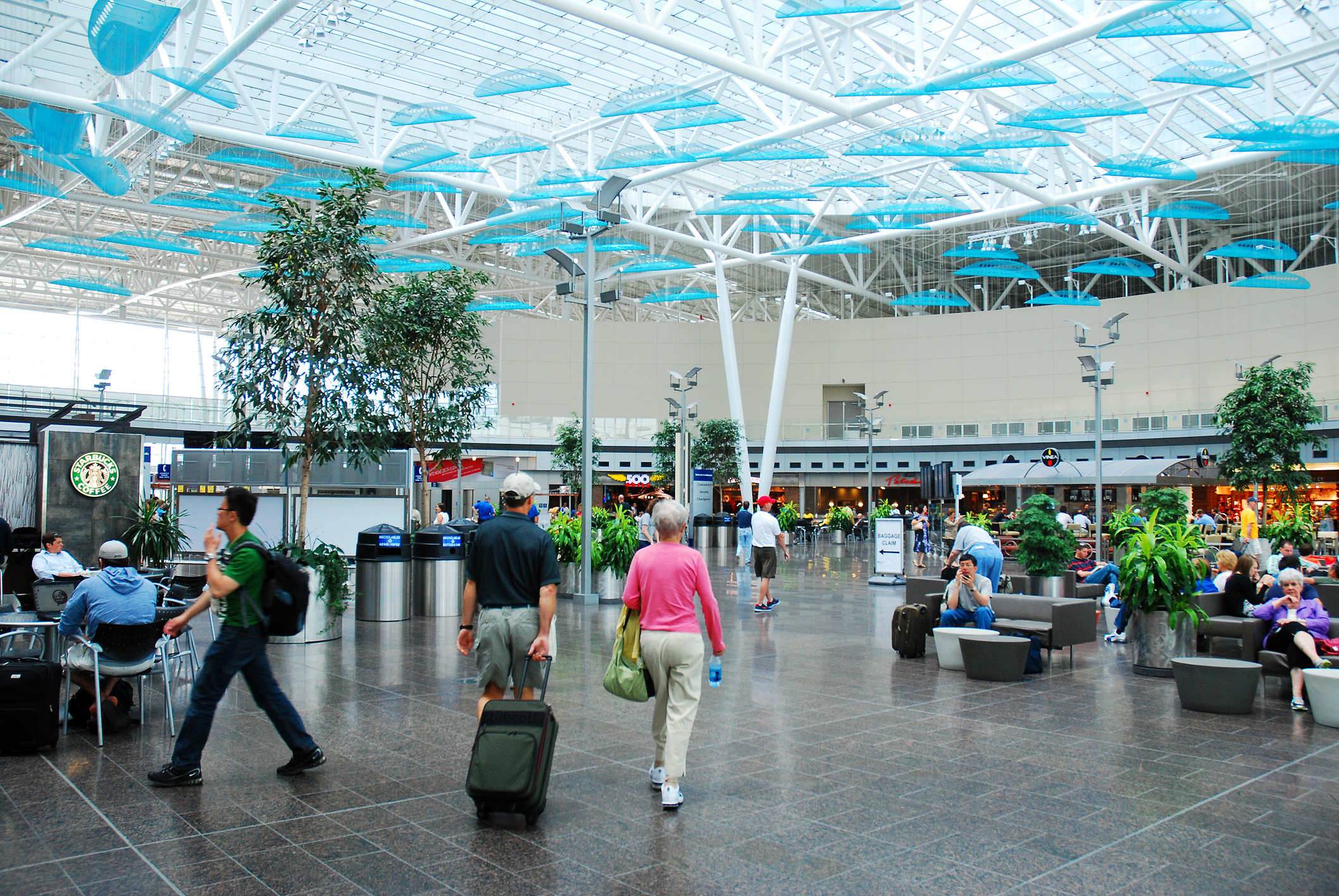Airports have long been seen as an entryway that a majority of travelers pass through when visiting foreign destinations either for work or play. Although not seen as major geographical attractions, airport authorities have recognized that there is a great need for their facilities to be known for more than just a centre for air travel; airports need to be secure, efficient, convenient, comfortable and well designed in the eyes of their customers.
Retail Meets Travel
The demand for amenities from patrons has sparked the need for designers to mirror some considerations that are similar to that of a shopping mall. Firms involved with the design and construction of airports now need to understand where certain amenities will be assigned so that the proper building systems can be considered and used in specific areas of an airport. Base building systems have to be designed with a certain amount of flexibility in mind to meet the needs of various stakeholders. For example, kitchen exhaust systems can be designed into the base building design should there be an opportunity to expand or modify an existing area of an airport into an area for food and beverage tenants. Other areas may be just strictly retail, and the tenant requirements for heating, cooling and plumbing need to meet the requirements of each tenant and also need to be within the guidelines that are usually set by the respective airport authority. Casual travellers also like to be near gates, regardless of how early they arrive. As a result, travellers expect amenities to be available in the vicinity of the gates, which may include a variety of shops, restaurants, lounge areas and other amenities that allow patrons to feel comfortable prior to boarding a flight.
Security
The increased level of security and the changing requirements associated with security checkpoints is something designers need to be cognizant of. Projects can shift during mid-design or even during construction due to changing security requirements and can potentially create problems with schedules and delivery objectives if a team is ill-prepared to deal with these types of scenarios. In addition to new or changing aviation regulations, technology can also alter how designers approach security checkpoint areas. New screening lanes that incorporate a more automated and efficient process for checking carry-on baggage and CT scanner technology that allows passengers to keep digital devices on them as well as liquids not only contribute to a better customer experience but improve efficiencies around safety and security. These types of new and evolving technologies need to be considered from the beginning of a project so that proper building systems are in place to support today’s technology and future developments that increase efficiency, security, and the overall experience of a traveller and those involved with ensuring the safety and security of an airport and its patrons.
Environment & Automation
Much attention and focus has been placed on making buildings more sustainable. Reducing an organization’s carbon footprint will continue to impact all sectors and industries, and as a result, building owners are adopting a variety of strategies that not only influence their particular buildings’ overall energy usage but also help reduce the impact on the environment and their respective communities.
The effects are the same on airports, albeit on a larger scale. Airports around the world are investing in technologies and programs that help reduce emissions and energy consumption, such as geothermal energy systems that absorb heat from the ground that help heat runways and taxiways, utilizing recycled asphalt and concrete, investing in LED lighting, and lighting through the use of daylighting techniques which can diminish energy costs and reduce an airport’s carbon footprint while providing a more pleasant setting for travellers.
As well as general improvements in infrastructure and equipment efficiencies, there have been a number of advancements in building automation systems technology. There is now a far greater ability to control environments based on the actual activities occurring in a space. For example, occupancy sensors can turn off lights and regulate heating and cooling in areas, reducing energy consumption. These advances in technology allow systems to react to the conditions in an area of an airport based on the activities of the occupants, with potential energy savings coming as a result. Data is also collected via these types of systems so that organizations can be more proactive rather than reactive when it comes to making future improvements.
As the demand for air travel continues to increase and the shift for more sustainable designs continues to become a more crucial part of the design process, those involved in the building of airports will need to be well-versed in this constantly changing and complex industry. Keeping ourselves informed while informing our clients of the latest technologies, developments and regulations, in addition to understanding the growing and diverse demands of various stakeholders in the aviation industry, remains crucial to our team’s ability to deliver quality engineering solutions that help our clients achieve their project goals and objectives.
